Balkinization
an unanticipated consequence of
Jack M. Balkin
Balkinization Symposiums: A Continuing List
E-mail:
Jack Balkin:
jackbalkin at yahoo.com
Bruce Ackerman
bruce.ackerman at yale.edu
Ian Ayres
ian.ayres at yale.edu
Corey Brettschneider
corey_brettschneider at brown.edu
Mary Dudziak
mary.l.dudziak at emory.edu
Joey Fishkin
joey.fishkin at gmail.com
Heather Gerken heather.gerken at yale.edu
Abbe Gluck abbe.gluck at yale.edu
Mark Graber
mgraber at law.umaryland.edu
Stephen Griffin
sgriffin at tulane.edu
Jonathan Hafetz
jonathan.hafetz at shu.edu
Jeremy Kessler
jkessler at law.columbia.edu
Andrew Koppelman
akoppelman at law.northwestern.edu
Marty Lederman
msl46 at law.georgetown.edu
Sanford Levinson
slevinson at law.utexas.edu
David Luban
david.luban at gmail.com
Gerard Magliocca
gmaglioc at iupui.edu
Jason Mazzone
mazzonej at illinois.edu
Linda McClain
lmcclain at bu.edu
John Mikhail
mikhail at law.georgetown.edu
Frank Pasquale
pasquale.frank at gmail.com
Nate Persily
npersily at gmail.com
Michael Stokes Paulsen
michaelstokespaulsen at gmail.com
Deborah Pearlstein
dpearlst at yu.edu
Rick Pildes
rick.pildes at nyu.edu
David Pozen
dpozen at law.columbia.edu
Richard Primus
raprimus at umich.edu
K. Sabeel Rahmansabeel.rahman at brooklaw.edu
Alice Ristroph
alice.ristroph at shu.edu
Neil Siegel
siegel at law.duke.edu
David Super
david.super at law.georgetown.edu
Brian Tamanaha
btamanaha at wulaw.wustl.edu
Nelson Tebbe
nelson.tebbe at brooklaw.edu
Mark Tushnet
mtushnet at law.harvard.edu
Adam Winkler
winkler at ucla.edu
Compendium of posts on Hobby Lobby and related cases
The Anti-Torture Memos: Balkinization Posts on Torture, Interrogation, Detention, War Powers, and OLC
The Anti-Torture Memos (arranged by topic)
Recent Posts
Doubts about the New "Scholarly Impact" Ranking
Just A Few Blogs
ACS Blog
Alas, a Blog
Althouse
Arts and Letters Daily
Atrios (Eschaton)
Bill of Health
Buzzflash.com
Buzz Machine
Cato at Liberty
Juan Cole (Informed Comment)
Concurring Opinions
The Constitution in 2020
Corrente
Crooked Timber
Daily Howler
Daily Kos
Dana Boyd
Brad DeLong
Digby (Hullabaloo)
Discriminations
Daniel Drezner
Kevin Drum (Mother Jones)
Electrolite
En Banc
Eunomia (Daniel Larison)
Fafblog
Michael Froomkin (Discourse.net)
GovLab (Beth Noveck)
Rick Hasen (Election Law)
History News Network
How Appealing
Ignatz (Sam Heldman)
The Importance of (Ernie Miller)
Infolaw
Instapundit
International Economic Law and Policy Blog
IntLawGrrls
Jacob Levy
Jesus' General
Jurisdynamics
The Kitchen Cabinet
Mark Kleiman
Law Blog Central
Larry Lessig
Lawyers, Guns and Money
Liberal Oasis
Brian Leiter's Law School Reports
The Leiter Reports
Marginal Revolution
Megan McArdle
Memeorandum
Metafilter
Mirror of Justice
The New Republic
Newseum
No More Mister Nice Blog
Brendan Nyhan
Opinio Juris
Orcinus
The Originalism Blog
Pandagon
Passport (Foreign Policy)
Overcoming Bias
Political Animal (Washington Monthly)
Political Theory Daily Review
Political Wire (Taegan Goddard)
The Poor Man
Virginia Postrel
Prawfsblawg
Public Reason
Jonathan Rauch
Raw Story
Redstate
ReligiousLeftLaw.com
Reporters Committee For Freedom of the Press
Reproductive Rights Blog
Rothman's Roadmap to the Right of Publicity
SCOTUS Blog
Seeing the Forest
Clay Shirky
The Shifted Librarian
The Situationist
Larry Solum (Legal Theory)
Andrew Sullivan
Talking Points Memo
Talk Left
Tapped
Tbogg
TechPresident
The Paper Chase (Jurist)
Tom Paine
Tom Tomorrow (This Modern World)
Eve Tushnet
Uggabugga
University of Chicago Law School Faculty Blog
Unqualified Offerings
The Volokh Conspiracy
War and Piece (Laura Rozen)
Wampum
Oliver Willis
Wonkette
Written Description
Matthew Yglesias
Yin
Your Choice of Feeds
1. XML
powered by
2. Atom Feed
3. RSS 2.0
Doubts about the New "Scholarly Impact" Ranking
Brian Tamanaha
A new law school ranking is out which purports to objectively measure the “scholarly impact” of the “Top 70” law faculties. The ranking has generated a great deal of interest and commentary among legal academics. Reflecting this interest, their paper has been downloaded over a thousand times in little more than a week (earning a high rank for number of SSRN downloads within two weeks of posting). While the authors concede that their study, which extends Brian Leiter’s ranking of the top 25 law faculties, has limitations, they assert that it is superior to the US News ranking.
The US news ranking might well be garbage, as many law professors complain, but it is not a persuasive reason in favor of the new ranking system to assert that it is superior to garbage. If we are to take it seriously, it must constitute a valid way of measuring what it purports to measure: “scholarly impact.” I will raise a few doubts about the validity of this new ranking system.
A core theme of their paper is that several law faculties are treated unfairly by the US News Academic Reputation rating. “Based on Scholarly Impact Scores,” the authors write, “several law faculties appear to be significantly under-valued law schools.” For example:Presumably due to its recent entry on the scene, the University of St. Thomas (Minnesota) is the most dramatically under-valued law school among the top 40 in scholarly impact. The University of St. Thomas enters into the First Tier at #38 in the Scholarly Impact Ranking, while being ranked by U.S. News in the Third Tier.
The authors of the study, it bears noting, are professors at St. Thomas. I sympathize with their frustration. St. Thomas has an excellent faculty (I have visited the school, and two dear friends of mine, leading scholars in their respective fields, are on their faculty.).
What the authors fail to mention, however, is the reverse implication of their contention. For every law faculty that is under-valued, there must be a law-faculty that is over-valued. This raises uncomfortable questions. Are the authors claiming that their faculty has a greater “scholarly impact” than, say, the law faculties at Iowa, Alabama, San Diego, William & Mary, Fordham, Florida, Wake Forest, Wisconsin, Boston College, Tulane, etc.? (just a few of the 150 or so law faculties that score below St. Thomas).
A more dramatic example will help illustrate my point. Cal-Irvine, a brand new law school, is ranked 9th by the “scholarly impact” study. Would the authors say that the Cal-Irvine faculty (impressive as it is) has a greater “scholarly impact” than the law faculties at Cornell, Duke, Michigan, Pennsylvania, UCLA, Virginia, Vanderbilt, Texas, Georgetown, Minnesota, Illinois, etc.? (all ranked below Cal-Irvine).
These claims strike me as patently implausible. And I suspect many law professors would have the same negative reaction. This contrary intuition suggests that perhaps there is something wrong with how the authors have constructed the ranking or with what they claim the ranking represents (of course, it is also possible that my contrary intuition is wrong). If the authors are not in fact making these claims, then what are they claiming?
This is not just about where St. Thomas and Cal-Irvine stand. All of the law faculties mentioned above are talented and prodigious. The proposition that each can be precisely slotted relative to the others by “scholarly impact” calls out for skepticism.
Not surprisingly, the closer one looks at the study the less sound it appears. To produce their ranking (following Leiter’s methodology), the authors count the number of times tenured law professors at each school are cited in the Westlaw law journal data base (more accurately: they count the number of times a professor’s name is mentioned, including acknowledgments and other non-substantive references). They multiply the mean citation count of the tenured faculty by 2 and add this to the median citation count.
If we are truly measuring the “scholarly impact” of a law faculty—and if we assume that citations are a good proxy for scholarly impact (more on this later)—then it seems that the most straightforward way to compile the ranking is simply to add up the total number of citations for all professors on each faculty.
The smaller schools will protest that this would put them at a disadvantage, but why should that be a reason to adjust how we count? If the ranking purports to measure the scholarly impact of each law faculty, size matters. Cal-Irvine has a small group of frequently cited professors (boosted by the presence of the most highly cited person in legal academia, Erwin Chermerinsky), but it can hardly be maintained that their “impact” exceeds that of larger faculties with a greater total number of citations (think of Texas or Georgetown). It might even be said that the study design hands an unwarranted advantage to small faculties that possess a couple of highly cited scholars (because the mean—which counts double—is more subject to influence on a small faculty).
Another counter-intuitive oddity lies in the details of the study.
The authors presumably would agree that there is no real difference in “scholarly impact” between schools ranked right next to each other. It seems reasonable to assume, for example, that the faculties ranked 27th and 28th are roughly equal, especially since their citation scores are not far apart. A real difference in “scholarly impact” exists only between schools that have markedly different citation scores—like the 200 points that separates the school ranked 14th (Penn) from the school ranked 23rd (Emory). Right?
Not so fast. It turns out that Yale (#1) scores 200 points higher than Harvard (#2). Is it plausible to say that Yale exceeds Harvard in “scholarly impact” by a significant margin? Consider further that Yale’s weighted score is almost 600 points above Columbia’s (#6). Yale’s score exceeds Columbia’s by more than a third. For perspective, note that the next school on the list, Berkeley (#7), is 600 points above Wisconsin (#55). In terms of citation score, then, Yale is superior to Columbia in “scholarly impact” to the same extent that Berkeley is superior to Wisconsin.
It should be evident that there is something problematic with measuring “scholarly impact” in this way. I doubt that even the folks at Yale believe they are so superior to Harvard and Columbia (and Chicago, Stanford, NYU, etc.). These fabulous faculties are interchangeable (literally, professors at these schools regularly move from one to the other, and back). Indeed, in this respect the US News Academic Reputation rating appears to be more accurate than the scholarly impact ranking because the former has Yale and Harvard in a tie, followed closely by Chicago, Stanford and Columbia in a tie.
Another problem with the study becomes apparent when we understand why Yale fares so well. Substantially more articles are published in law journals on constitutional law than any other subject. Consequently, constitutional law scholars are cited far more often than other scholars. (When ranked by citation count, for example, the twentieth ranked constitutional law scholar has more citations than the first or second ranked scholar in almost all other fields.) Yale scores so highly in large part owing to its extraordinary cadre of constitutional law scholars—with five faculty members placing among the top ten in citation counts in this category. Yale has a terrific faculty across the board, of course, with leading scholars in every field. But so does its peer schools. What sets Yale apart in citation counts is its particular strength in constitutional law, combined with the fact that constitutional law is the most written on topic.
Is it sensible to construct a “scholarly impact” score that is skewed by academic fashions? The infatuation of law review editors with constitutional law is not quite a fad—it has been dominant for some time—but I have never seen a persuasive argument that constitutional law scholarship is the most important or influential legal field. Perhaps a more accurate ranking of “scholarly impact” would equalize the weight of citation counts across legal fields.
I don’t have an answer to this question. I raise it to show, once again, that this new ranking system is problematic in fundamental ways.
When raising these doubts, I have deliberately stayed away from a pivotal underlying question: Is a citation a reliable indication of “scholarly impact”? The legal academy follows a notoriously bizarre citation system: virtually every assertion in an article must be supported by a citation (example: “The rule of law is an important notion around the world today.” See Tamanaha, On the Rule of Law). This requirement inflates citation counts; law professors often rely upon research assistants and law review editors to produce the obligatory citations; often the students produce these citations by raiding the footnotes of other articles that previously made the same point; a source cited once can thereby become a source cited many times (dirty secret: one cannot assume that a source cited was actually read by the professor who cites it.). This underside of citation practices—which throws doubt on the proposition that citation counts are a reliable measure of scholarly impact—is well known.
Some of my concern would be allayed if the authors renamed the study with a more accurate title: “Ranking of Law Faculties by Mean (x 2) plus Median Citation Counts.” To claim anything more than that is unsupported.
The authors might respond that if I don’t like their study I should devise a better one. But that would miss my overarching point: the entire exercise is misguided. Scholarly impact—a judgment that depends upon various concrete and inchoate factors—cannot be measured in terms refined enough to produce a valid ordinal ranking. We can make broad brush assessments (supported by relevant data) about the superior productivity of certain law faculties in comparison to others, but little more can be said.
Legal academics excoriate US News for its ranking. The right course of action, it seems to me, is not to construct an alternative ranking of law faculties—particularly when every such ranking will suffer from significant distortions—but instead to eschew the ranking enterprise altogether. An ordinal ranking of law faculties is particularly inapt (US News ranks law schools, not law faculties as such).
Alas, the new ranking will have predictable consequences, some of them unseemly or downright pernicious. Soon, a number of law school websites and promotional mailings will proudly tout their impressive “Scholarly Impact” ranking. Deans will brainstorm ways to increase citation counts on their faculty (easy tips: hire more constitutional law scholars; encourage your faculty to liberally cite colleagues or thank them by name). The citation counts of potential hires will be considered in lateral hiring decisions. Law schools will be forced to pay a premium to keep high citation professors on their roster for the purposes of the count (even if in name and paycheck only); more of these folks will get simultaneous appointments on two faculties (both schools are credited with the full amount of citations). Professors will point to their high citation count as grounds for a bigger raise (Deans will use low citation counts to justify a lower raise). And so on.
The authors might protest that they cannot be blamed for misuses of their ranking system, but that hardly matters in the intensely competitive environment of legal academia, which puts pressure on law schools to maximize every measure that factors into anything that bears the dreaded title “Ranking.”
As the collective over-emphasis on citations gathers momentum, it will be too late to remind ourselves that the “scholarly impact” ranking has no more merit than a superficial beauty contest that disproportionally isolates on a couple of flashy features. The ranking will have a negative impact on legal academia simply because it exists and cannot be ignored.
The authors are not doing something better than US News—they are repeating its error of producing a ranking of dubious validity without heed to its negative consequences. The harm inflicted on law schools by US News will be compounded by an additional set of harms that follow from this new “scholarly impact” ranking. This time, however, the wounds will be self-inflicted because law professors are constructing and promoting the new ranking (lending it a patina of credibility).
Posted
11:00 AM
by Brian Tamanaha [link]
If, as is commonly acknowledged, law review editors are already unduly influenced by the prestige of of the authors submitting (usually ascertained by CV) the effect of citation rank (which would at some point become standard information on a CV), would be to aggravate the problem. One could easily see editors at top journals adopting rules-of-thumb such as not considering anyone in the top-X of citation rank.
All this would, of course, push the importance of citation rankings even more, further incentivize gaming the system, and produce even more damaging status-stratification, and less attention to the merits of pieces, in law publication than currently exists...
However, that has never happened. For instance, I remember that when I was applying to colleges and then again law schools, I received lots of information from the admissions offices of various institutions, but almost all of it was basically ad copy. US News at least tries to give people useful information that might help them make better decisions.
If academics really want to decrease the influence of ratings that they believe are misleading, the only way they will ever succeed in doing this is to create their own metrics that give people information they need and allow them to make comparative decisions. And I wouldn't hold my breath waiting for this to happen.
school grants
However, if approaches such as St Thomas' new instrument reflect a greater instantaneity of understanding the tapestry of many branches of the law, I support such fresh efforts simply for the diversification they add to the dialog about quality and quantity of curricula and faculty.
Why? Why is that "patently implausible"? Why is it so obvious that every single one of these law faculties must be endorsed as manifestly making a stronger scholarly impact than California-Irvine? Beyond the echo chamber that entrenches past law school reputations, what concrete basis is there for this conclusion? Brian draws upon his "intuition" about the relative strengths of scholarly activity at various law schools, while dismissing objective evidence that may contradict the conventional wisdom. In our view, this common tendency toward reliance on gut feelings and anecdotes only confirms that a methodical measure of scholarly impact is valuable and a worthwhile challenge to too-easy assumptions.
With respect to California-Irvine, certain qualifications and limitations should be emphasized, which were forthrightly stated by Brian Leiter when he posted the top 25 scholarly impact ranking earlier this spring. (I should emphasize here, however, that I speak only for myself and my comments shouldn’t be attributed to Brian Leiter.) First, whether looking at the top 25 in scholarly impact or at the extension of that ranking to the top 70 that we at the University of St. Thomas recently released, those law faculties that are ranked closely together should not be seen as significantly different, if at all, from each other. So no one should assert, and I do not, that California-Irvine has a "greater 'scholarly impact' than" all of the other schools that Brian Tamanaha lists above, several of which are nestled together in the top 25 rankings. Second, because it is so new and is still building its faculty, California-Irvine is the one law faculty for which scholarly impact scores were calculated based on prognostications according to a formula that, again, was candidly described when the top 25 ranking was posted. Third, we’ve never claimed that scholarly impact scores say everything about scholarly prominence of a law faculty and instead have carefully outlined in our report various limitations and qualifications.
That being said, instead of resting on subjective and historical impressions, I'd suggest that anyone truly interested in the subject spend a couple of hours looking at the faculty assembled at California-Irvine (their faculty web page is very well-organized and easy to navigate), checking faculty C.V.s, running some Westlaw searches, reading some of their published works, etc.
The pertinent scholarly impact question is whether the work of the present roster of faculty at a law school is percolating among other legal scholars and helping define and contribute to the national scholarly discussion in the legal literature.
Whether based on scholarly impact scores or an alternative measure of scholarly productivity -- both of which are addressed in our scholarly impact study report -- is it plausible that the present law faculty gathered at California-Irvine may have a greater scholarly impact than many, perhaps most, of the law schools typically ranked in the top 40 or so? In a word, "yes."
thanks so much i like very so much your post
حلي الاوريو الفطر الهندي صور تورتة حلى قهوه طريقة عمل السينابون طريقة عمل بلح الشام بيتزا هت كيكة الزبادي حلا سهل صور كيك
عجينة العشر دقائق
طريقة عمل الدونات طريقة عمل البان كيك طريقة عمل الكنافة طريقة عمل البسبوسة طريقة عمل الكيك طريقة عمل عجينة البيتزا فوائد القرفه
hollister clothing
oakley sunglasses
kate spade handbags
oakley sunglasses
louis vuitton outlet
michael kors outlet online
michael kors outlet online
michael kors outlet
louis vuitton handbags
hollister co
abercrombie
coach factory outlet
coach outlet
gucci shoes
jordans
beats by dre
michael kors outlet online
cheap oakleys
louis vuitton purses
cheap toms shoes
giuseppe zanotti sneakers
nike air max
canada goose jackets
ed hardy clothing
ugg outlet
michael kors
oakley sunglasses wholesale
uggs on sale
timberland boots
michael kors handbags
coach outlet online
michael kors outlet
nike air huarache
coach factory outlet
louboutin pas cher
louis vuitton outlet
pandora jewelry
michael kors handbags
ugg slippers
Books by Balkinization Bloggers

Linda C. McClain and Aziza Ahmed, The Routledge Companion to Gender and COVID-19 (Routledge, 2024)

David Pozen, The Constitution of the War on Drugs (Oxford University Press, 2024)

Jack M. Balkin, Memory and Authority: The Uses of History in Constitutional Interpretation (Yale University Press, 2024)
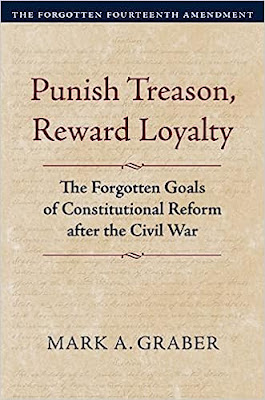
Mark A. Graber, Punish Treason, Reward Loyalty: The Forgotten Goals of Constitutional Reform after the Civil War (University of Kansas Press, 2023)
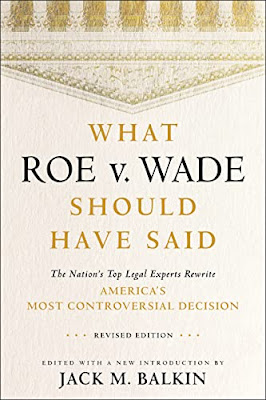
Jack M. Balkin, What Roe v. Wade Should Have Said: The Nation's Top Legal Experts Rewrite America's Most Controversial Decision - Revised Edition (NYU Press, 2023)

Andrew Koppelman, Burning Down the House: How Libertarian Philosophy Was Corrupted by Delusion and Greed (St. Martin’s Press, 2022)

Gerard N. Magliocca, Washington's Heir: The Life of Justice Bushrod Washington (Oxford University Press, 2022)
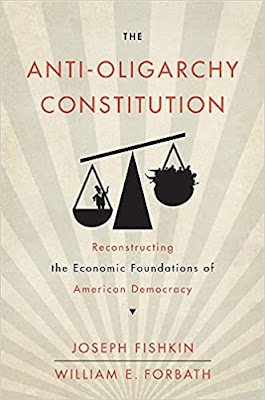
Joseph Fishkin and William E. Forbath, The Anti-Oligarchy Constitution: Reconstructing the Economic Foundations of American Democracy (Harvard University Press, 2022)
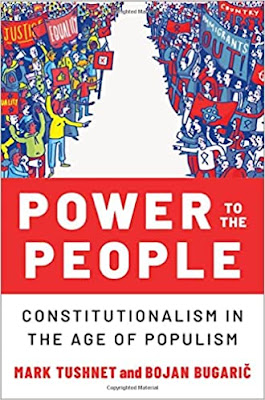
Mark Tushnet and Bojan Bugaric, Power to the People: Constitutionalism in the Age of Populism (Oxford University Press 2021).

Mark Philip Bradley and Mary L. Dudziak, eds., Making the Forever War: Marilyn B. Young on the Culture and Politics of American Militarism Culture and Politics in the Cold War and Beyond (University of Massachusetts Press, 2021).

Jack M. Balkin, What Obergefell v. Hodges Should Have Said: The Nation's Top Legal Experts Rewrite America's Same-Sex Marriage Decision (Yale University Press, 2020)

Frank Pasquale, New Laws of Robotics: Defending Human Expertise in the Age of AI (Belknap Press, 2020)

Jack M. Balkin, The Cycles of Constitutional Time (Oxford University Press, 2020)

Mark Tushnet, Taking Back the Constitution: Activist Judges and the Next Age of American Law (Yale University Press 2020).

Andrew Koppelman, Gay Rights vs. Religious Liberty?: The Unnecessary Conflict (Oxford University Press, 2020)

Ezekiel J Emanuel and Abbe R. Gluck, The Trillion Dollar Revolution: How the Affordable Care Act Transformed Politics, Law, and Health Care in America (PublicAffairs, 2020)

Linda C. McClain, Who's the Bigot?: Learning from Conflicts over Marriage and Civil Rights Law (Oxford University Press, 2020)
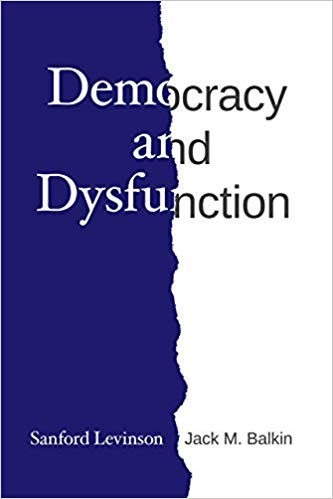
Sanford Levinson and Jack M. Balkin, Democracy and Dysfunction (University of Chicago Press, 2019)

Sanford Levinson, Written in Stone: Public Monuments in Changing Societies (Duke University Press 2018)

Mark A. Graber, Sanford Levinson, and Mark Tushnet, eds., Constitutional Democracy in Crisis? (Oxford University Press 2018)

Gerard Magliocca, The Heart of the Constitution: How the Bill of Rights became the Bill of Rights (Oxford University Press, 2018)

Cynthia Levinson and Sanford Levinson, Fault Lines in the Constitution: The Framers, Their Fights, and the Flaws that Affect Us Today (Peachtree Publishers, 2017)

Brian Z. Tamanaha, A Realistic Theory of Law (Cambridge University Press 2017)

Sanford Levinson, Nullification and Secession in Modern Constitutional Thought (University Press of Kansas 2016)

Sanford Levinson, An Argument Open to All: Reading The Federalist in the 21st Century (Yale University Press 2015)

Stephen M. Griffin, Broken Trust: Dysfunctional Government and Constitutional Reform (University Press of Kansas, 2015)

Frank Pasquale, The Black Box Society: The Secret Algorithms That Control Money and Information (Harvard University Press, 2015)

Bruce Ackerman, We the People, Volume 3: The Civil Rights Revolution (Harvard University Press, 2014)
Balkinization Symposium on We the People, Volume 3: The Civil Rights Revolution

Joseph Fishkin, Bottlenecks: A New Theory of Equal Opportunity (Oxford University Press, 2014)

Mark A. Graber, A New Introduction to American Constitutionalism (Oxford University Press, 2013)

John Mikhail, Elements of Moral Cognition: Rawls' Linguistic Analogy and the Cognitive Science of Moral and Legal Judgment (Cambridge University Press, 2013)

Gerard N. Magliocca, American Founding Son: John Bingham and the Invention of the Fourteenth Amendment (New York University Press, 2013)

Stephen M. Griffin, Long Wars and the Constitution (Harvard University Press, 2013)

Andrew Koppelman, The Tough Luck Constitution and the Assault on Health Care Reform (Oxford University Press, 2013)

James E. Fleming and Linda C. McClain, Ordered Liberty: Rights, Responsibilities, and Virtues (Harvard University Press, 2013)
Balkinization Symposium on Ordered Liberty: Rights, Responsibilities, and Virtues

Andrew Koppelman, Defending American Religious Neutrality (Harvard University Press, 2013)

Brian Z. Tamanaha, Failing Law Schools (University of Chicago Press, 2012)

Sanford Levinson, Framed: America's 51 Constitutions and the Crisis of Governance (Oxford University Press, 2012)

Linda C. McClain and Joanna L. Grossman, Gender Equality: Dimensions of Women's Equal Citizenship (Cambridge University Press, 2012)

Mary Dudziak, War Time: An Idea, Its History, Its Consequences (Oxford University Press, 2012)

Jack M. Balkin, Living Originalism (Harvard University Press, 2011)

Jason Mazzone, Copyfraud and Other Abuses of Intellectual Property Law (Stanford University Press, 2011)

Richard W. Garnett and Andrew Koppelman, First Amendment Stories, (Foundation Press 2011)

Jack M. Balkin, Constitutional Redemption: Political Faith in an Unjust World (Harvard University Press, 2011)

Gerard Magliocca, The Tragedy of William Jennings Bryan: Constitutional Law and the Politics of Backlash (Yale University Press, 2011)

Bernard Harcourt, The Illusion of Free Markets: Punishment and the Myth of Natural Order (Harvard University Press, 2010)

Bruce Ackerman, The Decline and Fall of the American Republic (Harvard University Press, 2010)
Balkinization Symposium on The Decline and Fall of the American Republic

Ian Ayres. Carrots and Sticks: Unlock the Power of Incentives to Get Things Done (Bantam Books, 2010)

Mark Tushnet, Why the Constitution Matters (Yale University Press 2010)
Ian Ayres and Barry Nalebuff: Lifecycle Investing: A New, Safe, and Audacious Way to Improve the Performance of Your Retirement Portfolio (Basic Books, 2010)
.jpg)
Jack M. Balkin, The Laws of Change: I Ching and the Philosophy of Life (2d Edition, Sybil Creek Press 2009)

Brian Z. Tamanaha, Beyond the Formalist-Realist Divide: The Role of Politics in Judging (Princeton University Press 2009)
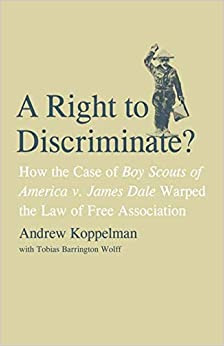
Andrew Koppelman and Tobias Barrington Wolff, A Right to Discriminate?: How the Case of Boy Scouts of America v. James Dale Warped the Law of Free Association (Yale University Press 2009)

Jack M. Balkin and Reva B. Siegel, The Constitution in 2020 (Oxford University Press 2009)
Heather K. Gerken, The Democracy Index: Why Our Election System Is Failing and How to Fix It (Princeton University Press 2009)

Mary Dudziak, Exporting American Dreams: Thurgood Marshall's African Journey (Oxford University Press 2008)

David Luban, Legal Ethics and Human Dignity (Cambridge Univ. Press 2007)

Ian Ayres, Super Crunchers: Why Thinking-By-Numbers is the New Way to be Smart (Bantam 2007)

Jack M. Balkin, James Grimmelmann, Eddan Katz, Nimrod Kozlovski, Shlomit Wagman and Tal Zarsky, eds., Cybercrime: Digital Cops in a Networked Environment (N.Y.U. Press 2007)
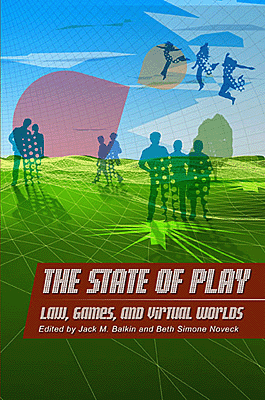
Jack M. Balkin and Beth Simone Noveck, The State of Play: Law, Games, and Virtual Worlds (N.Y.U. Press 2006)

Andrew Koppelman, Same Sex, Different States: When Same-Sex Marriages Cross State Lines (Yale University Press 2006)
Brian Tamanaha, Law as a Means to an End (Cambridge University Press 2006)
Sanford Levinson, Our Undemocratic Constitution (Oxford University Press 2006)
Mark Graber, Dred Scott and the Problem of Constitutional Evil (Cambridge University Press 2006)
Jack M. Balkin, ed., What Roe v. Wade Should Have Said (N.Y.U. Press 2005)
Sanford Levinson, ed., Torture: A Collection (Oxford University Press 2004)
Balkin.com homepage
Bibliography
Conlaw.net
Cultural Software
Writings
Opeds
The Information Society Project
BrownvBoard.com
Useful Links
Syllabi and Exams

